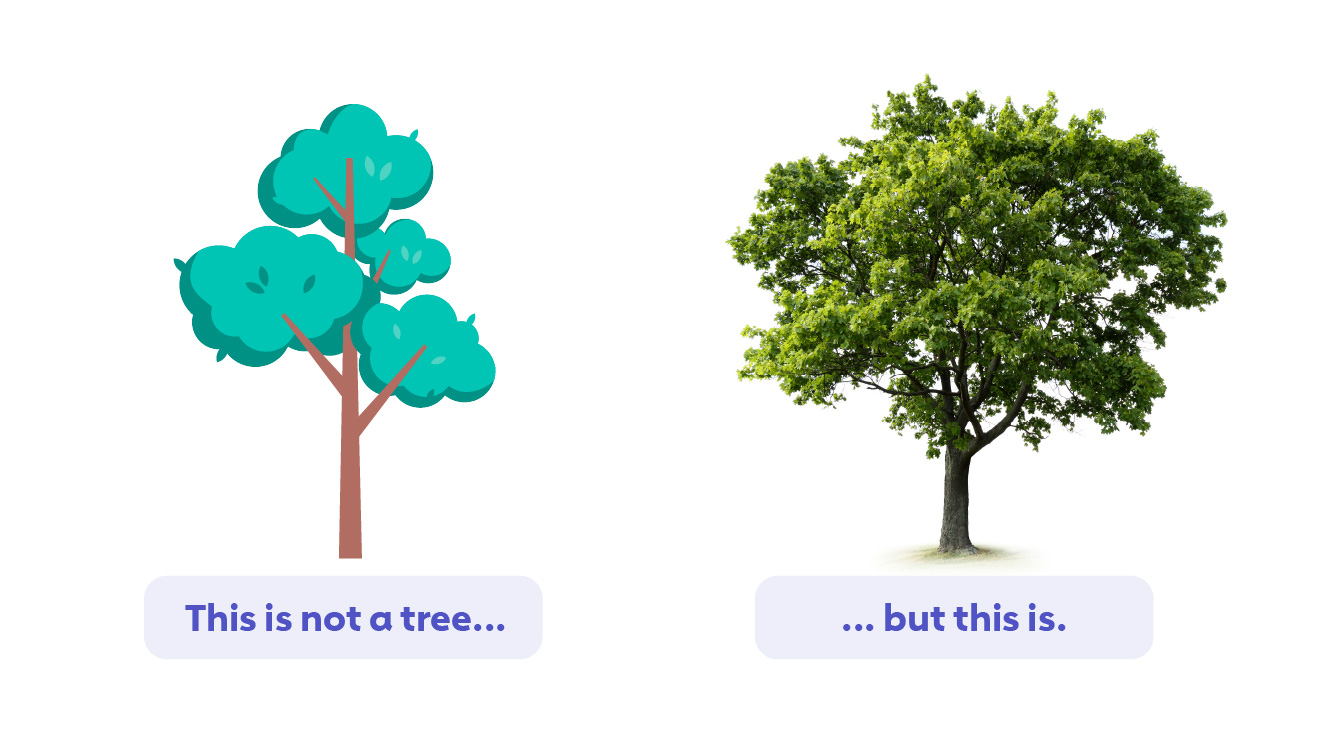The most valuable asset at any organization is undoubtedly its resources. With a wide range of meaning and impact, resources put the pedal to the metal and generate all the amazing ideas, projects and products that your company is able to deliver. What exactly are resources though?
In this blog post, we hope to explain what resources are and demonstrate how important they are in achieving an organization’s goals.
Table of Contents:
What Is a Resource, and What Are the Different Types of Resources?
So, What Exactly Is a Resource?
To put it simply, a resource is whatever tool is needed to achieve a goal. These can be physical resources, financial resources or even human resources.
Physical resources…
…are probably the most well-known. These are the specific equipment or materials you need to deliver your product. Let’s say for the sake of example that you run an ice cream shop. In this case, some of the physical resources needed would be sugar, cream, cones and chocolate. These physical resources are anything you need to make the ice cream that you sell.
Human resources…
…the ones that interest us the most for this blog post, are the people and the skills you need to execute your mission.
Wait! Did you just call people resources?
When I first read the term “resource” to refer to people, I was also shocked. Although I don’t have enough time to fully get into it today, we do have another great blog post about how this term can get confusing.
In a nutshell, let’s put it like this: If I draw a picture of a tree, and write “this is not a tree” underneath it, it would be true, right? We know that the drawing is a representation of a tree, needed for that specific moment where I need a representation of a tree. However, this representation does not have the fullness and critical aspects of a real tree. It is just a representation.
That is how “resources” are used in a planning process. Human resources represent the skills that will be needed to complete the task.

In our hypothetical ice cream shop metaphor, the human resources are not only the people who work at the counter and make the ice cream, but also the people who have the ideas that produce delicious new flavors.
Finally, there are financial resources.
These are also pretty clear- in order to achieve your goals, you need capital. Financial resources are the fiscal backing you have. You can use them to buy what you need, like physical materials and advertisements, and to pay your employees or other fees.
For our ice cream shop, the financial resources are what was originally used to buy the space and the equipment, to pay the payroll and to invest in other franchises or branches.
The Role of Resources
It’s clear to see that almost all the critical parts of a business and its goals can be represented by resources. The way you plan your resources is essential to the success of your organization. It allows you to know that you have the right people and materials available at the right time.
If, in our ice cream shop example, you know that you have a big city event coming up, you’ll know that you need a larger amount of physical resources to make enough ice cream. You’ll also need the correct people on staff to come up with good flavors and work at the shop. You will probably also have to have enough money to pay for advertisements. None of this could be achieved without efficient and proper resource management.
Leveraging Skills and Collaboration
How do you leverage these skills that your resources have? The first step is to clearly recognize that your resources do in fact have these skills. This takes more than just reading a piece of paper.
Being a people-centric organization can look different for everyone. However, it means that you and your employees are more than just facts on a sheet. Make sure you take time to get to know your people, and then make sure you share this information in a centralized location.
A great solution would be to make sure that you hold “get-to-know-you” chats as soon as a new colleague is hired. From these, you can enter all of the facts, including their skills and work availability into a single database. There, it would be easy to search and connect with the resources you need.
Once you know what these skills are, you can foster meaningful collaboration throughout your organization.
If someone is great at task A and another coworker is great at task B, you have the opportunity and foresight to know that these two people would yield the right results for your organization.
By communicating these facts throughout your org, you not only bring everybody up to speed on where strengths lie, but also build motivation and confidence within your workforce. People know that they are valued and feel excited to work, while others know where they can find the skills that they need.
Hiring and Acquiring Resources
With all of this in mind, it’s important to keep your hiring pool wide and diverse. If you cast a wide net, you are more likely to recruit a large variety of skills to your company. This means that you can truly build a dynamic team and utilize the resources you have as best as possible.
Look Externally
For those cases where resources are not readily available, you can always outsource to, or partner with, outside organizations. This is an important option for the simple reason that certain industries or professions may have specialists who often only work on a temporary basis, such as consultants.
When we reflect back on the meaning of resources, we’re looking for specific people with a specific skill set. Sometimes, these founts of knowledge may be found in people who make a specialization their living – you just have to know where to look for them.
Invest in Perfecting Your Onboarding and Training
In order to utilize your resources as best as possible, you need to make sure that they are given the correct tools to succeed. A standardized onboarding process, in addition to incentives like a stipend for trainings to develop skills, are keys to success. Your resources’ accomplishments, flexibility and skills are net wins for everyone. Resources are more effective in their jobs, with a wider range of skills, and your organization can grow further based on their development.
Make Your Predictions Reliable
The easiest way to know what resources you need is to play out all possibilities in the context of your project portfolio. First, consider a “what-if” plan for your company.
If you go into the planned projects with the exact amount of FTE you currently have available, will you be able to achieve what you need to?
To answer this question, talk to some of your project and resources managers—do they think the plan is feasible with the available resources?
What if you hired one more full-time person (i.e., secured 1 more FTE)? How would that change your possibilities?
What Exactly Is an FTE?
While it may seem like an abstract term, FTE stands for full-time equivalent. This means that an FTE could equate to a different amount of actual time depending on the organization that utilizes it. Let’s look at this concretely:
- At the company TechDesign, based in the United States, a full-time contract is 40 hours a week. This means that 1 FTE = 40 hours a week.
- At TechDesign’s outpost in London, a full-time contract is 35 hours a week. This means that 1 FTE at TechDesign UK = 35 hours a week.
- FTEs change with the calendar of the organization; this means that national holidays will change one week’s FTE
- At TechDesign US, for the week of July 4th, 1 FTE = 32 hours, because the company has July 4th off.
- At TechDesign UK, for the week of the King’s Coronation, 1 FTE = 28 hours, because the company has Coronation Day off.
- If, at TechDesign US, you have 2 consultants, both working 40 hours a week, you have 2 FTE for the consultant role.
- Alternatively, if you have 2 consultants, one working full-time, and one part-time at 50%, you have 1.5 FTE for the role.
Why Plan with FTEs?
FTEs are usually used to standardize the way your organization represents employee capacity across employment types and departments. It lets you get a more comprehensive overview of your personnel requirements. Companies with many part-time employees particularly benefit from FTEs as opposed to days or hours.
How FTEs Can Help Your Org:
- Uniformly and transparently map out the full available workforce.
- Easily analyze the capacity situation and compare different departments.
- Fill missing capacity through recruiting.
- Standardize the effort for projects and tasks and better determine who is needed for them.
Efficient Resource Utilization
To utilize your resources effectively, you should make sure that you have adequate allocation strategies; you need a clear strategy, an overview of capacities and skills and a simple way to allocate employees to projects.
Avoid spreadsheets; simply put, a basic spreadsheet, while utilitarian, doesn’t directly show you where problem areas are, or suggest how you can easily fix them.
Meisterplan for Resource Management
On the other hand, we here at Meisterplan use something that can do just that: the Team Planner. With simple spreadsheet-like editing, you can easily use the tool – but with key resource manager-focused features, like clear designations of who is overallocated when, you can easily make sure you avoid all resource bottlenecks.
Nurturing Resource Happiness and Retention
The best way to keep your resources happy, as well as to raise the level of resource retention, is to create a nurturing and supportive work environment. This can look like a lot of different things:
- Making sure that everyone gets the credit they deserve for the ideas they suggest.
- Ensuring that no one is overloaded.
- Certain tools will help you plan people, but what you really want to look for are resource management tools that let you know if/when your resources are overloaded. This increases happiness, because no one likes to have too much of a burden on their shoulders.
- With happier resources, the overall culture at your organization stays more positive.
- Additionally, these resources will want to stay at your company, which means you can keep valuable people on board in case of a skills shortage in society at large.
Furthermore, the plans you’ve made actually work, because you know how much time can be realistically devoted to projects; you can forecast more effectively with clear, reliable resource data; and the promises you make to your clients are far more reliable, as you are able to deliver on time.
A win-win, no?
Resources – The Heart of Any Organization
They are not only those who do the work, but are also the people who breathe life into the company’s goals. That being said, it’s important to remember some of the key facts of resources:
- Skill utilization: Resources are valuable because they have such dynamic, different skill sets. Make sure you pay attention to what each resource can (and does!) bring to the table.
- Collaboration: Everyone succeeds when skills are used effectively to play off of and interact with each other. Take time to get to know your resources’ skills and have fun considering how these different skills can combine and work in unexpected and innovative ways.
- Happiness: Happy resources work more effectively and efficiently – it's as simple as that. A peaceful, successful work environment does more than just put you at ease. It also makes sure that you and all of your colleagues are functioning at their highest potential.
We hope this blog post has shown you how important resources are for your organization. By using resources effectively in your organization, you can help not only your company, but also your resources themselves maximize potential and achieve goals.
Read Next

Riedel Conquers Hybrid R&D Projects with Meisterplan’s Strategic Resource Planning



